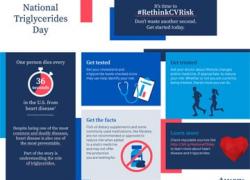5 Low-Carb Swaps for A Guilt-Free Holiday Season
Courtney McCormick, Dietitian at Nutrisystem, offers five low-carb swaps to keep you healthy and happy through the holidays:
1. Try veggies when you're craving a crunch. We're all guilty of lingering too long at the chips and salsa bowl at a holiday party. If you're craving something crunchy such as a pretzel or chips, try carb-conscious snacks with a crunch - brussel sprouts chips, kale chips, veggies such as cucumber, zucchini, and carrots - they pair wonderfully with a healthier dip such as low-fat ranch or hummus.
2. Sub in cauliflower for your favorite comfort foods. Do you love mashed potatoes, rice, pizza, and tater tots? If you've been avoiding these foods as part of your healthy lifestyle, cauliflower is here to help. This versatile veggie has recently become popular as a substitute for some of our favorite comfort foods. Mashed and steamed cauliflower have a texture and taste that is surprisingly similar to mashed potatoes - add a bit of salted butter and enjoy! And if you're not ready to go all in on the cauliflower craze just yet, McCormick recommends swapping out at least half the potatoes for cauliflower.
3. Mix your own dressings and condiments. Have you taken a close look at the nutrition facts on your favorite cranberry sauce? You might be shocked by the carbs and added sugars in dressings, sauces, and condiments, even those that appear to be "healthier" options. The best way to avoid sneaky carbs in your condiments is to make them at home. That way, you can control the ingredients and ensure they taste great.
4. Bring the healthy alternative to the holiday party. Where everyone else is hauling sugary cookies and cakes, dare to bring the delicious low-carb snack! Get creative with the presentation - use edamame hummus, pita, and slices of red pepper to make perfectly festive "holiday trees."
5. Don't drink your carbs. You've probably heard the saying, "don't drink your calories," before, but you shouldn't drink your carbs either. Toss the fruit juices and sodas for seltzer, unsweetened tea, and the original favorite, water. Light beer, spiked seltzer, or dry wines are good low-carb alcohol options if you're celebrating.
For more great tips and tricks on how to make the most of your holidays with healthy alternatives, visit leaf.nutrisystem.com.





